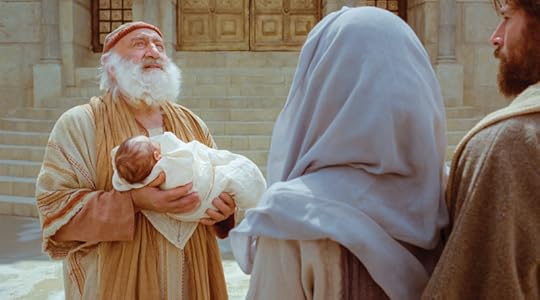Notice This One Little Verse and Luke 2 Will Never Be the Same
 Photo by Anuja Mary Tilj on Unsplash
Photo by Anuja Mary Tilj on UnsplashDid I just turn Luke chapter 2 into clickbait? Maybe. But this chapter, and one verse in particular, gained new meaning for me this year.
Luke 2 may be my most read chapter of New Testament scripture. It was part of every Christmas lesson in church. Portions were read in every Christmas sacrament meeting. It was covered in Sunday School at least once every four years, plus seminary and institute. And my family reads it every year on Christmas Eve (my paternal grandfather would even recite it from memory).
I’ve read this chapter hundreds of times. Though perhaps over the years it became like a hymn to me—the words and the rhythm deeply familiar, though not necessarily deeply analyzed. It covers a lot of ground, from Mary and Joseph going to Bethlehem to be taxed, to Mary delivering the baby and laying him in a manger, to the prophecies of Simeon and Anna, and more. I had read the prophecy of Simeon many times, but until a Roman Catholic friend introduced me to Mary Our Lady of Sorrows earlier this year, I had never paid attention to the final two of Simeon’s eleven verses, wherein he prophesies about Mary.
 Source
SourceLuke 2:34 “And Simeon blessed them, and said unto Mary his mother, Behold, this child is set for the fall and rising again of many in Israel; and for a sign which shall be spoken against; 35 (Yea, a sword shall pierce through thy own soul also,) that the thoughts of many hearts may be revealed.”
Mary, having already conceived, delivered, and named the baby Jesus, is told that a sword shall pierce her soul that the thoughts of many hearts may be revealed.
Why had I never noticed this prophecy before? I have to take some personal responsibility. I had read these verses many times. I had never given them special attention in a chapter filled with so many important events and declarations and prophecies. Part of it may have been my eagerness to get to the next verse where Anna is called a “prophetess,” a title denied to women in my tradition outside of rare examples, like Eliza R. Snow. However, I feel now that I have been missing something by skipping over a prophecy directly about Mary.
I remember many talks and lessons that discussed Mary’s role in delivering the baby, in taking him to the temple, and in seeking her missing son whom she found teaching and expounding scripture in the temple in Jerusalem. Certainly, attention was given to Mary’s response in verse 19 after shepherds recount their angelic visitation. “But Mary kept all these things, and pondered them in her heart.” It seems that this quiet pondering was a good, womanly activity to highlight and encourage.
But I can’t recall a single discussion of Simeon’s prophecy to Mary in my entire Mormon upbringing. Of course, my memory is imperfect. I may have zoned out in such a lesson, deciding the chapter content was too familiar to give my full attention. But maybe, like so many other stories of women in the scriptures, Mary’s importance was fulfilled in giving birth and not much after that merited discussion.
I searched the LDS Scripture Citation Index, and in the 79 years of general conference talks included, Luke 2:35 is only mentioned a single time. In the April 1958 General Conference, Harold B. Lee mentioned Simeon’s prophecy to Mary and took a moment to reflect on what it must have been like for Mary to sit at the foot of the cross and watch her son die. Interestingly, he did not include the part of the verse that says “that the thoughts of many hearts will be revealed.” However, this talk appears to be the only and most extensive treatment from general conference of Simeon’s prophecy to Mary since at least 1942 when the index begins.
I checked the Come Follow Me New Testament manual, and while there is guidance to read and discuss the prophecies of Simeon and Anna, there is no specific focus on these verses. Same with the 2014 New Testament Institute Manual. My search was not exhaustive—perhaps other manuals or books or First Presidency Christmas firesides or resources do discuss the prophecy. But my experience leads me to suspect that it is rare for institutional resources and talks to lend focus to Mary, especially in any way that encourages members to think she can be meaningful to them today. I was pleased to see that a number of women at The Exponent had drawn discussed the prophecy about Mary before, including this beautiful poem by Alisa and this Young Women’s lesson by Em.
 Source
SourceWhy does it matter if Mary is told that a sword will pierce her own soul that the thoughts of many will be revealed? Perhaps because it suggests that Mary’s place in the story of Jesus is not confined to her role as a vessel or womb. That her own life and experience, as well as her experience of her son’s death, is meaningful. That something about me and my thoughts and focus and intentions is revealed in how I perceive this Holy Mother. That there is something for me to learn and feel and know in seeing Mary and her sorrows.
I have much to learn about Mary. But this evening, as my family gathers to read Luke 2 and think of the birth of Jesus, I will also remember his mother and think a bit more about what I can learn from her.



